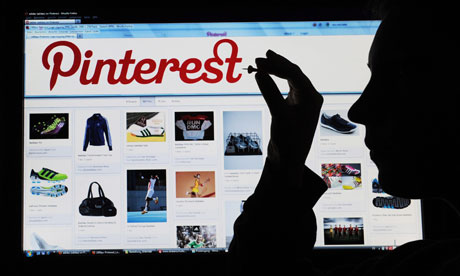5 Tips to Master Pinterest for Business
Online scrapbooking platform Pinterest isn’t just for DIYers. With more than 70 million users according to consumer insight firm Semiocast, Pinterest has become a valuable tool for many small businesses looking to drive sales or connect with potential clients.
The social media company closed a $225 million round in funding in late October, valuing Pinterest at $3.8 billion.
While Pinterest has a reputation as being heavy on female-friendly content, like women’s apparel or home decorating tips, experts say the platform has a lot to offer businesses of all kinds, from retailers to service providers.
“Most small businesses are not doing a lot of ecommerce, but there’s still an SEO (or search engine optimization) value,” says Marketing Land and Search Engine Land editor Greg Sterling. By being active on the platform, Sterling says small businesses can improve their rankings on search engines like Google or Bing.
At the Altimeter Group, which provides advice for businesses faced with business disruptions, expert Susan Etlinger says businesses can also use Pinterest to share presentations, white papers, articles and videos.
“Anything that tells a story of the business works,” says Etlinger.
The experts share their top five tips on how to use Pinterest effectively:
No. 1: Make your website Pin-friendly.
Users can “pin” items to their personal boards by using a downloadable “Pin It” widget. To encourage consumers to engage with your company’s content, Etlinger suggests having a “Pin It” button on all content on your site, similar to the buttons that enable users to share content on Facebook or tweet it on Twitter.
“Having the pinning symbol is a fantastic intelligence tool,” says Etlinger, because it can show business owners what content is resonating with viewers online.
No. 2: Organize your content.
Pinterest enables all users to create themed boards. Alexis Krisay, a partner at Serendipit Consulting, says businesses should organize content by theme, making it easier for other users to find and browse content.
“If you’re a home décor shop, organize boards so you have a home accessories board, a couches and chairs board and a pillows board,” says Krisay.
No. 3: Brand your pins.
While it takes more time, the experts agree that branding the photos that are uploaded to Pinterest is worth the added effort.
“By including your logo on photos, when users share that photo, they’re sharing your logo,” says Krisay.
Etlinger agrees that businesses should use branding as much as makes sense. A logo in a corner is a subtle touch, while a huge watermark over the image may turn off some Pinners.
No. 4: Include shopper-friendly information.
Compared to other social sites like Facebook or Twitter, Sterling says Pinterest users approach the platform with a shopping mindset. To take advantage of that, he and the other experts suggest including as much “shopper-friendly” information as possible, describing the product or service featured.
“Put as much detailed product information as you can without it looking hard or difficult,” advises Etlinger.
Drawing from real-life client experiences, Krisay says she has a realtor client who started including information about the homes he was showing (price, number of bedrooms and bathrooms, etc.) and doubled the number of direct leads on his website.
No. 5: Engage the community.
Krisay advises her clients to spend approximately an hour each day on social media, dividing the time between various platforms like Pinterest, Twitter and Facebook. Aside from uploading new photos of inventory, the experts say business owners should seek to become active in the online community.
“Don’t follow people to get follows,” says Sterling, “but be actively involved in a sincere way.”
This might include repinning content that is relevant to your boards, answering users’ questions on your items or commenting on other users’ content.
“Think of this as a way to create broader and richer relationship with current and potential customers and friends,” says Etlinger.
Source: entrepreneur.com




